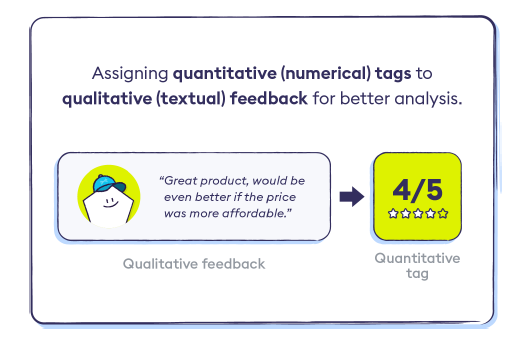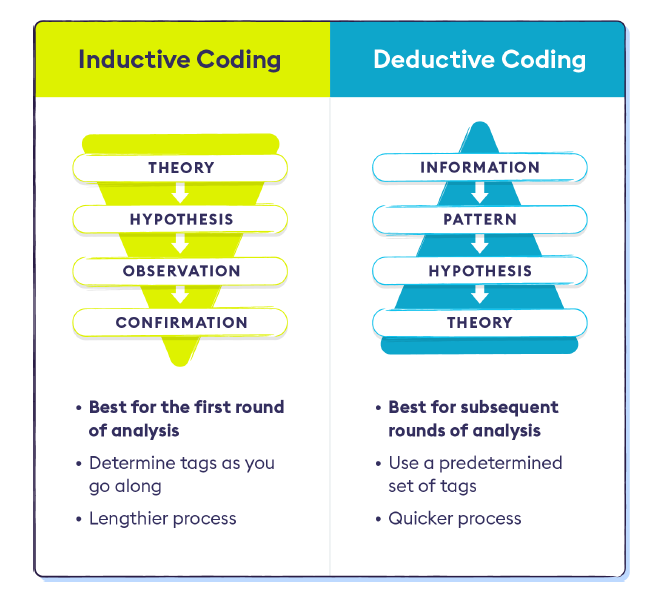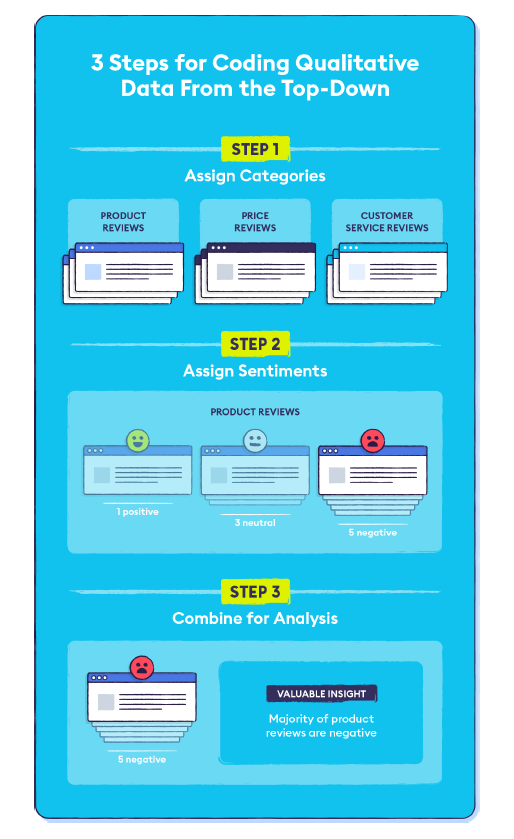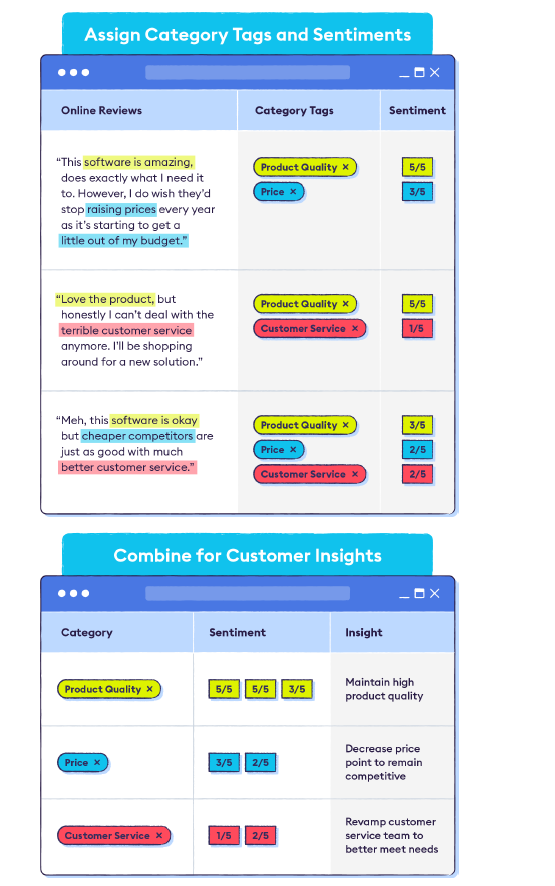How to Make Qualitative Textbased Feedback Actionable
Collecting customer feedback is key for customer experience management. There are many options when it comes to gathering that feedback. One is open-ended questions. While they are especially insightful, they can also be challenging when it comes to analyzing the data and drawing conclusions. This is where the method of qualified data coding comes in handy.
1) The Why
If you don’t ask for customer feedback, you’ll never know what you’re doing good (and do more of it) or bad (and do less of it). And since customer satisfaction and loyalty are crucial factors that determine a company’s financial performance, missing to measure and survey poses an avoidable drawback.
Besides the fact that collecting your customer’s feedback shows them you listen and value their opinion which gives you the chance to involve your customers and attach them through creating a strong relationship. This in turn results in customers spreading positive word-of-mouth for you.
If you want to cut it down to the hard fact: only through real customer feedback, you will be able to make data-based decisions. You shouldn’t fall for gut instinct or unsupported guesswork when it comes to allocating your money on projects or products.
2) The How
Looking at textbased feedback (from surveys, online reviews, mentions in social media), the most valuable insights usually come from free-form or open-ended responses. These types of responses allow for more detailed insights, but they are difficult to measure and analyze on a large scale.
That’s where coding qualitative data comes in. It allows you to transform unique responses into quantitative metrics that can be compared to the rest of the data set.
What is Qualitative Data Coding?
It’s the process of assigning quantitative tags to pieces of data. This method allows you to compare and contrast large amounts of data.
Source: Chattermill
There are two ways to approach the coding depending on how well you already know what you’re looking for:
Inductive Coding: This approach is most suitable for the first round of analysis when you don’t already have a set scale to use for tagging your data. You might not yet know exactly what you will be measuring.
Deductive Coding: Best for subsequent rounds of analysis when you already have a predetermined scale or set of tags.
Source: Chattermill
3) A 4-Step Guide for Qualitative Data Coding (Starting with Inductive Coding)
Start with Broad Categories:
Categories are specific aspects you want to know more about.
Let’s take a restaurant as an example, your categories could include food quality, food price, atmosphere, location, service, etc. Another example in the B2B space, might lead you to categories such as product quality, product price, customer service, chatbot quality, etc.Assign Emotions or Sentiments
Go through each category and assign a sentiment or emotion to each piece of data. You can start basic with positive/negative emotion, or more advance if you use a scale (e.g. 1-5).Combine Categories and Sentiments to Draw Conclusions
After sorting your data in categories and assigning sentiments you can start to compare the numbers and draw conclusions.
Let’s take the restaurant example again: Perhaps you see that out of 500 Yelp reviews, 300 fall into the “food price & negative sentiment” section of your data. This might give you an indication that customers think your food is too expensive, therefore you might want to think about lowering your prices to see an improvement in customer retention.
Or if we use a B2B example again: You might discover that the majority of customers aged 20-30 are giving negative feedback on your customer service team (a 1/5 - 2/5 on your scale). You may be able to conclude that younger customers need a more streamlined way to communicate, perhaps through a chatbot service.Take Action (&Repeat the process with more specific research goals)
Based on what you find you are now able to take action. An action might also be to collect more specific insights for example to survey a specific demographic category to verify and deepen insights.
Source: Chattermill
Source: Chattermill
4 Tips for Accurate Qualitative Data Coding
Start with a small sample size of your data:
Choose 10-20% of responses in each category to tag using inductive coding. Then continue onto analysis phase using just that 10-20%. If you are able to find takeaways and easily compare the data with your small sample you are on the right track and can continue coding.Use numerical scales for deeper analysis:
The basic positive & negative sentiments might be too broad, break it down using numerical scales. Having access to more nuanced data helps you make more accurate decisions.Each data point can contain multiple pieces of information:
That might be multiple categories and multiple sentiments. For our restaurant example this might be a Yelp review mentioning boh atmospere and price.Limit the number of tags:
By getting to granular you will end up with very few data points in the same category and sentiment, which defeats the purpose of coding qualitative data. E.g. in our restaurant example: Instead of distinguishing between “hostess behavior” and “server behavior” it might be better to just tag both with “customer service”
4) The Essence
Qualitative coding helps you to make large amounts of free-form customer feedback actionable. While you can certainly do that by yourself, you can also tend to Artificial Intelligence using technology like text and sentiment analytics to perform this task.



